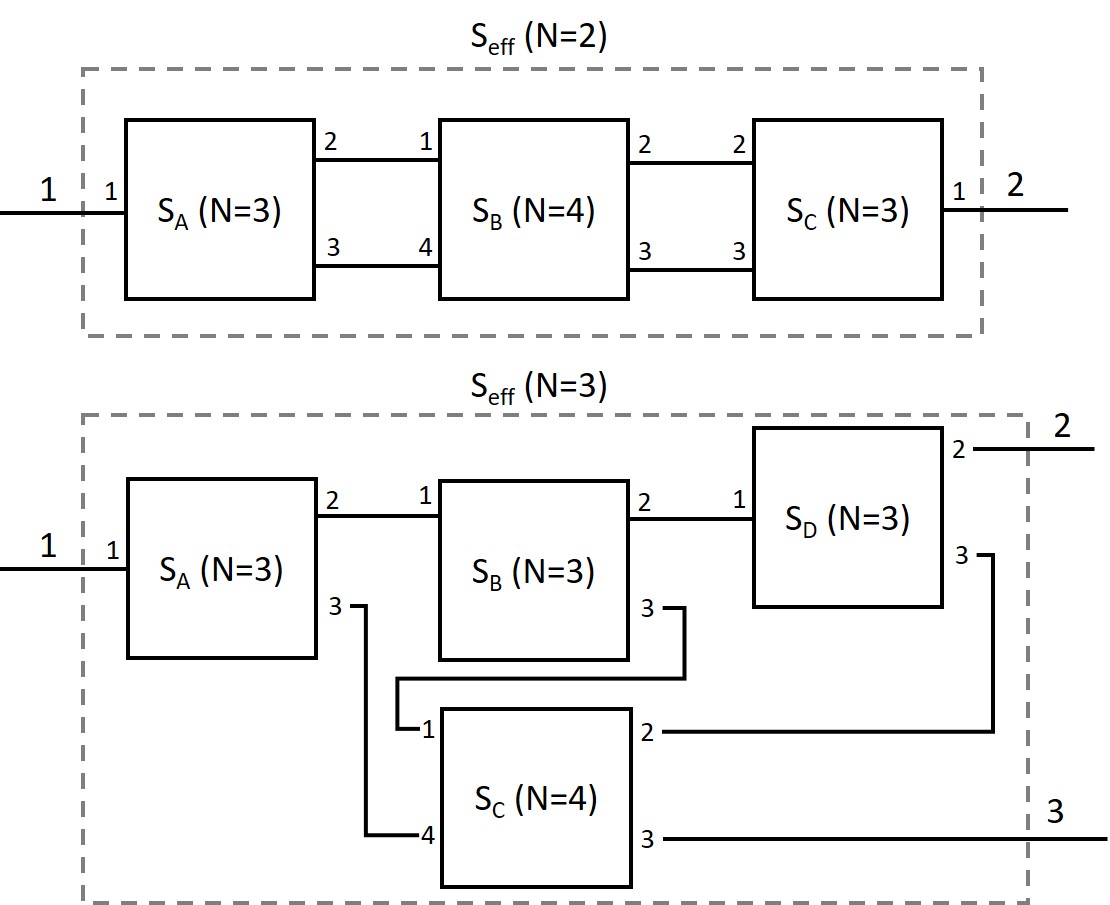Cascading networks with >2 ports

I"m familiar with T and ABCD parameters for cascading 2 port networks, but can't find any extension to more ports. Maybe something like Mason's rule is the correct approach...
In general speaking, any combination connected of n-port devices/systems can be analyzed by Mason's Flow Rule.
Of course this is not easy for more than 2-3 ports and few systems but this is generalized method.
Yes, Mason's rule is very nasty to use by hand, and takes a ton of time. There really has to be a simpler way... I see that MATLAB has a few functions that seem to do this computationally, but I can't find their methods.
Mason's rule is the way to go, sorry but no shortcuts available.
Consider by voltage and current.
This means Z-matrix or Y-matrix formulation.
You can cope with any configuartion by them.
I've found what seems to be a fairly handy method called CSC, described here and here. It only requires the S parameters of each network, and some manually constructed matrices which identify port connections. No Mason's rule needed, and it also can also give the waves at the internal ports. I've coded a couple test examples and it seems to work well.
Sounds simple but you'd still be writing down a very large system of equations for each case, regardless of the parameter set used. This is effectively what CSC seems to do, in a very organized manner. I think it would also apply to Z and Y parameters as well, with some adjustments.
